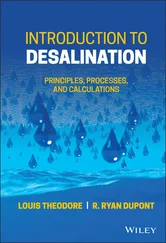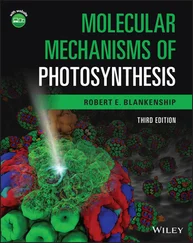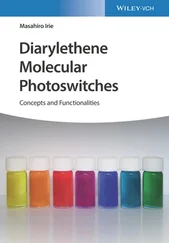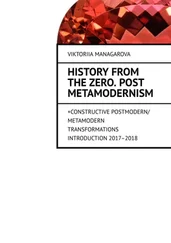3 Chapter 3 Figure 3.1 Mobility of phospholipids in a biomembrane. Three types of moveme... Figure 3.2 Vesicle and liposome formation. (a) In an aqueous environment, li... Figure 3.3 Asymmetric structure of biomembranes. Figure 3.4 Permeability of artificial lipid membranes for biologically relev... Figure 3.5 Important membrane proteins and transport processes. (a) Schemati... Figure 3.6 Glucose transporters in an intestinal cell. Glucose is pumped fro... Figure 3.7 Schematic view of communication pathways between cells. (a) Endoc... Figure 3.8 Schematic representation of receptor classes on the cell surface.... Figure 3.9 Activation of adenylyl cyclase and formation from cAMP as second ... Figure 3.10 Role of phospholipase C‐ β in the production of second messe... Figure 3.11 Signal transduction after activation of G‐protein and enzyme‐lin... Figure 3.12 Schematic representation of the endomembrane system of the cell:... Figure 3.13 Similarities of lysosomes and plant vacuoles. (a) Schematic stru... Figure 3.14 Composition of a mitochondrion. (a) Electron microscope photogra... Figure 3.15 Function of mitochondrion: metabolism and respiratory chain. (a)... Figure 3.16 Schematic overview of the arrangement of genes in the mtDNA of m... Figure 3.17 Development of an early eucyte and origin of mitochondria. α‐Pur... Figure 3.18 Structure of a chloroplast. (a) Electron microscope photo of a c... Figure 3.19 Essential steps in photosynthesis. (a) Overview of photosyntheti... Figure 3.20 Overview of the arrangement of genes in chloroplast genomes. Figure 3.21 Development of chloroplasts through phagocytosis of cyanobacteri... Figure 3.22 Synopsis of the breakdown pathways and energy‐producing pathways... Figure 3.23 Importance of glycolysis and the citric acid cycle as a point of... Figure 3.24 Schematic composition of actin filaments (microfilaments). Figure 3.25 Mechanism of muscle contraction. (a) Molecular mechanism of musc... Figure 3.26 Schematic view of microtubules and cilia structures. Tubulin dim... Figure 3.27 Schematic view of bacterial cell walls. (a) Gram‐positive bacter... Figure 3.28 Infection cycle and genome of retroviruses. (a) Genome compositi... Figure 3.29 Schematic outline of apoptotic pathways.
4 Chapter 4 Figure 4.1 Number of nucleotides in the haploid genomes of important groups ... Figure 4.2 Composition of eukaryotic genomes and a fraction of a few DNA ele... Figure 4.3 Schematic illustration of human chromosomes. The indentations ind... Figure 4.4 Important structural elements of chromosomes necessary for the re... Figure 4.5 Principle of telomere replication. The telomerase exhibits an RNA... Figure 4.6 From the nucleosome to the condensed metaphase chromosome. The DN... Figure 4.7 Schematic overview of mitosis and meiosis. Figure 4.8 Schematic summary of DNA replication. SSB, single‐strand binding ... Figure 4.9 Asymmetric composition of replication bubbles. DNA is unwound at ... Figure 4.10 Depurination, deamination, oxidation, and dimerization as exampl... Figure 4.11 Consequences of deamination, depurination, and oxidation. Cytidi... Figure 4.12 Base pairing of tautomeric DNA bases. The correct base pairings ... Figure 4.13 Consequences of gene mutations. Figure 4.14 Inheritance of mutations leading to the loss of protein function... Figure 4.15 From gene to protein: comparison of prokaryotes and eukaryotes. ... Figure 4.16 Schematic overview of the function of RNA polymerase and transcr... Figure 4.17 Simplified schematic illustration of the control of gene express... Figure 4.18 Structure of a eukaryotic gene. NCS, noncoding sequence. Figure 4.19 Schematic representation of alternative splicing processes. The ... Figure 4.20 Differences between genetic and epigenetic inheritance. Figure 4.21 Structure of RNA cassettes and synthesis of rRNA. ITSs, internal... Figure 4.22 Structure of (a) prokaryotic and (b) eukaryotic ribosomes. For t... Figure 4.23 Schematic illustration of protein biosynthesis in ribosomes. Thr... Figure 4.24 Loading tRNA with an amino acid. First the amino acid is activat... Figure 4.25 rRNA‐catalyzed peptide transfer in ribosomes. (a) Possible react...
5 Chapter 5 Figure 5.1 Schematic overview of protein transport inside a cell. Figure 5.2 Structure of a nuclear pore (reconstructed from electron microsco... Figure 5.3 Simplified model of the import and export of proteins via the nuc... Figure 5.4 Schematic overview of the uptake of a precursor protein by the mi... Figure 5.5 Simplified scheme of the import of a protein into the ER lumen. Figure 5.6 Simplified scheme of the integration of a membrane protein into t... Figure 5.7 Assembly of glycoproteins in the ER. The oligosaccharide exists a... Figure 5.8 Vesicle transport pathways in the cell. Figure 5.9 Structure of clathrin‐coated vesicles: (a) electron micrograph an... Figure 5.10 Schematic progression of receptor‐mediated endocytosis of LDL....
6 Chapter 6 Figure 6.1 A phylogenetic tree of life, showing the relationship between spe... Figure 6.2 Phylogenetic relationships between protists and transition to pla... Figure 6.3 Phylogeny of land plants. Figure 6.4 Phylogeny of Deuterostomia and vertebrates. Figure 6.5 Evolutionary trends in animal phylogeny.
7 Chapter 7 Figure 7.1 SDS gel electrophoresis. (a) Denaturing effect of SDS. (b) Setup ... Figure 7.2 Size exclusion chromatography. (a) Time course of size exclusion ... Figure 7.3 Anion exchange chromatography. Illustration of the time course of...Figure 7.4 Purification of NDPK with a Cibacron Blue‐Sepharose column. Plot ...Figure 7.5 Purification of His 6‐RGS16: Coomassie Blue R‐250 stain of a 15% S...
8 Chapter 8Figure 8.1 Key features of a mass spectrum: (a) natural isotope pattern of a...Figure 8.2 Setup of a tandem mass spectrometer allowing the recording of MS1...Figure 8.3 Collision‐induced fragment ion spectrum of the peptide FSGSGSGTSY...Figure 8.4 Metabolic stable isotope labeling. (a) Schematic setup of a SILAC...Figure 8.5 Label‐based quantification strategies in quantitative proteomics ...Figure 8.6 Identification of specific protein interaction partners by Co‐IP,...Figure 8.7 MALDI‐TOF fingerprinting of microorganisms. (a) Generation and an...
9 Chapter 9Figure 9.1 Mammalian chromosomal DNA in solution (right) precipitated after ...Figure 9.2 Separated plasmid DNA after ultracentrifugation in a CsCl–EtBr gr...Figure 9.3 Scheme of DNA purification for prokaryotes or eukaryotes using a ...
10 Chapter 10Figure 10.1 Agarose gel electrophoresis of plasmid DNA in the presence of Et...
11 Chapter 11Figure 11.1 Classical setup of a Southern blot after.Figure 11.2 Genetic analysis of transgenic mice by Southern blotting. Genomi...Figure 11.3 Analysis of gene expression in two strains of transgenic mice (2...Figure 11.4 Result of the expression screening of thousands of genes using l...Figure 11.5 FISH in chromosome preparations. (a) Detection of a deletion in ...Figure 11.6 ISH of two developmental genes ( even skipped [blue] and fushi ta ...
12 Chapter 12Figure 12.1 The discovery of restriction endonucleases such as HindIII was a...Figure 12.2 Palindromic sequence recognized by a restriction enzyme. The sym...Figure 12.3 Restriction sites of the restriction enzymes XbaI, AluI, and Pst...Figure 12.4 In order to incorporate nucleotides, a polymerase requires a DNA...
13 Chapter 13Figure 13.1 Schematic outline of PCR. (a) Basic principle: double‐stranded D...Figure 13.2 Increase in DNA copies, determined by using quantitative real‐ti...Figure 13.3 Schematic representation of the quantitative real‐time detection...
14 Chapter 14Figure 14.1 Schematic representation of the Sanger sequencing technique. The...Figure 14.2 Schematic representation of the pyrosequencing technique. (a) Nu...Figure 14.3 Schematic representation of the Illumina sequencing system. (a) ...Figure 14.4 Schematic representation of the Ion Torrent sequencing system. (...
Читать дальше
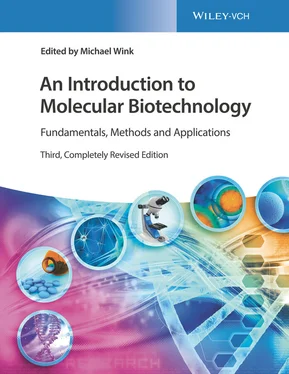
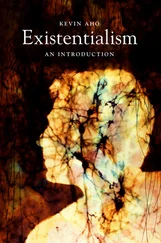

![Andrew Radford - Linguistics An Introduction [Second Edition]](/books/397851/andrew-radford-linguistics-an-introduction-second-thumb.webp)

